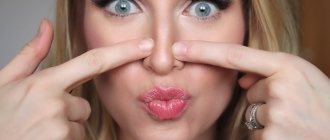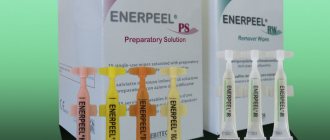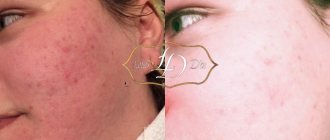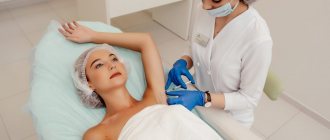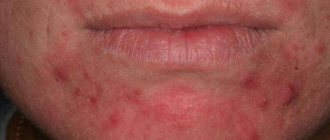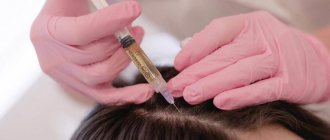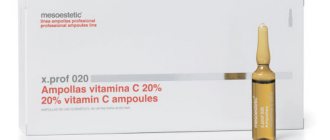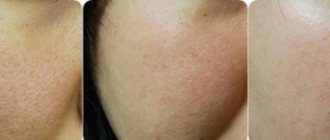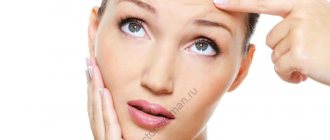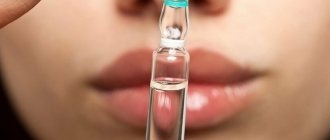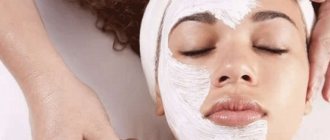Polynucleotides in cosmetology – reality, problems and prospects
Despite the huge number of cosmetic products and methods for correcting various skin problems of an aesthetic nature (acne, post-acne, signs of premature aging, etc.), the search for new directions for providing cosmetological care to clients remains relevant, taking into account modern requirements for scientific and practical developments of a biomedical nature .
This is due to both the latest scientific discoveries (developments on the characteristics of the inflammatory and reparative process in the skin, the unity of the regulatory molecular systems of the body, etc.), and the results of the practical application of cosmetological technologies [1-3].
Due to the need to take into account the complexity of the mechanisms of aging development (as well as other cosmetic problems), and the same approach to their correction, one of the promising methods that meet these criteria is injections of polynucleotides or PDRN (polydisoxyribonucleotides).
What are polynucleotides?
Nucleotides or polynucleotides (PDRN), like hyaluronic acid, belong to biopolymers. Some consider them the “elixir of youth”, while others avoid them, considering nucleic acids as just another “bio-garbage”.
The structure of polynucleotides is a combination of units of two different nucleic acids, DNA and RNA, which are extracted from the milk of salmon fish. The choice in favor of this biomaterial was due to the similarity of the representative DNA structures of the milk of the salmon family and the DNA of human leukocytes.
Can polynucleotides be called a novelty or innovation in the cosmetology space? And at present, the corresponding preparations are obtained as they were about 150 years ago - from salmon milt. Although the Swiss scientist F. Miescher in 1868 was the first to isolate nucleic acids from the nuclei of leukocytes of pus. Also, sources of polynucleotides can be yeast cells, bacteria, chicken red blood cells, calf thymus, and there are also methods for the synthetic production of nucleotides.
But salmon milk is still more compatible with the human body, and is rich not only in nucleic acids, but also in special proteins - protamines. Nucleic acids have been used for more than 100 years to treat lupus, tuberculosis and other diseases (such drugs as sodium nucleinate, derinat), a number of them are used as dietary supplements [9].
Polynucleotides in injection cosmetology, what to expect from them?
We know that the main task of nucleic acids is the storage and transmission of genetic information. And a logical question arises: Why should we use someone's genes (especially fish genes) for aesthetic purposes, and is it safe?
It is important to understand that only molecules with a molecular weight of 500 kDa (kilodaltons) have global capabilities such as genome invasion. In order to create a full-fledged gene with its inherent functionality, we will need several million nucleotide pairs. Everything below does not carry and is not capable of transmitting any genetic information, but it copes perfectly with cosmetological tasks.
Preparations for bioreparation contain about 20 thousand pairs of PDRN, and their main goal is the restoration of damaged pairs of polynucleotides in the human body that have undergone certain “breakdowns”.
Functions of polynucleotides
Polynucleotides are used not only for skin repair; their effectiveness has been noted at the general physiological level. They have anti-inflammatory properties, anti-ischemic and immunomodulatory effects.
PDRN in cosmetology has established itself as an indispensable procedure for eliminating signs of aging, thanks to the following properties:
- Increased elasticity and excellent lifting effect (PDRN drugs stimulate the production of your own collagen and elastin fibers);
- Deep hydration - polynucleotides have excellent hydrating properties and increase the production of hyaluronic acid;
- Cell regeneration - restore damaged tissues and take an active part in the formation of new blood vessels;
- Antioxidant property - PDRN preparations neutralize the effects of free radicals;
- Protection from UV radiation and elimination of pigmentation - polynucleotides can reduce the synthesis of melanin in cells.
Indications for PDRN
Due to their maximum biocompatibility and excellent reparative properties, polynucleotides can rightfully be considered the safe future of the beauty industry. Especially when it comes to anti-aging effects on the skin and the body as a whole.
Who else can be offered bioreparation with polynucleotides?
Indications for the procedure:
- Flabbiness and sagging facial skin.
- Wrinkles and pigmentation.
- Small vessels, spider veins and nodules.
- Rosacea.
- Dehydration of the skin.
- Scars and burns.
- Prevention of chrono- and photoaging
Polynucleotides and their role in the therapy of photo- and chronoaging
One of the key problems in cosmetology with which clients turn to a specialist is the appearance of signs of skin aging, which, in turn, is of two main types - chrono- and photoaging.
Both “chrono-” and “photoaging”, despite their differences, have common fundamental molecular mechanisms associated with disorders of collagen homeokinesis:
- At the same time, collagen types I and III decrease, and their ratio changes, correlating with a person’s age.
- Wrinkles are caused by irreversible damage to the supporting framework of the skin.
- In response to exposure to ultraviolet radiation, massive elastosis develops due to a 4-fold increase in elastin production and a significant decrease in fibrillin I, which, along with disturbances in the synthesis of glycoproteins MAGP-I and MGP-4, leads to the formation of incompletely shortened elastic fibers.
- Increased expression of versican (a proteoglycan that is deposited on the resulting abnormal elastin material) is detected.
- Massive accumulation of elastoid masses in the papillary and reticular layers of the dermis + increased degradation of collagen become the main pathohistological signs of photoaging, and with chronoaging they are aggravated due to disturbances in endocrine status.
In particular, chronoaging in women, aggravated by endocrine disorders, is called “menopausal” aging, and already in the first 5 years after menopause, the amount of collagen in the skin of women decreases by 30% [4].
Photoaging does not directly depend on genetic determination, but in older people, even a single exposure to UV rays on the skin, until it becomes slightly reddened, reduces collagen production by 80% [5], and a return to normal occurs after 48–72 hours. If exposure to UV rays is repeated, collagen production remains low for a long time; with even longer irradiation, the changes become irreversible and wrinkles form [6].
It should be especially emphasized that aging affects all layers of the skin, and this dictates the need for an integrated approach - influencing different “targets” at different levels (skin cells and other structures, molecular mechanisms of intercellular and cell-matrix interactions). At the same time, the key importance of the dermal layer in age-related changes in the skin and the peculiarity of the aging mechanisms should be taken into account: with chronoaging, the proliferative and biosynthetic activity of dermal fibroblasts changes; with photoaging, the predominantly biosynthetic function changes [7, 8].
PDRN in cosmetology: history and areas of application
PDRN drugs in cosmetology
In relation to drugs [polynucleotide] based on nucleic acids, the fundamental validity of their use should be emphasized: since the transfer of genetic information is realized from DNA to a specific protein, disorders of the metabolism of these acids are the most important inducers of almost all pathological processes; In this sense, there is an expression: “There are no non-genetic diseases”!!! [11-12].
Indeed, clinical experience with the use of such injectable DNA and RNA preparations as “Polydan [polynucleotides]”, “Sodium Nucleospermate”, “Placentex-Integro”, etc. has shown their effectiveness even against tumors, radiation sickness and other severe pathological processes.
The choice of sturgeon milk as a raw material for the production of such drugs is not accidental, since this minimizes the possibility of transmitting prion infection with the drug (due to the evolutionary distance of Acipenseridae from Homosapiens), and the specific functionally significant indicators of the DNA structure of sturgeon milk and the DNA of human leukocytes are very close (!!!).
Why should you contact us?
- Our clinic’s cosmetologists have accumulated extensive experience in the use of biorevitalizants; we will help you choose the drug that is right for you.
- The Code Beauty Medicine cosmetology clinic has professional cosmetology equipment and lasers that allow you to solve any problem and perfectly complement facial biorevitalization procedures.
- The Code Beauty Medicine cosmetology clinic uses only certified drugs, the safety and effectiveness of which are confirmed by registration certificates of the Russian Federal Service for Healthcare.
Biorevitalization with PDRN - what is the mechanism of action?
The mechanisms of action of cosmetics and cosmetic preparations made from polydeoxyribonucleotides (PDRN) are their influence on endogenous colony-stimulating factors, production and differentiation of hematopoietic progenitor cells. But the most significant is their immunomodulatory effect, especially in relation to the impact on the processes of regeneration and repair [13-15].
In particular, by stimulating the functional activity of monocytes/macrophages, PDRNs increase their ability not only (and not so much!) to phagocytose microbes and damaged structures in the skin (including damaged collagen and elastin), but also the function of antigen presentation, which significantly influences both on the T- and B-links of the immune system, and through them - on the entire complex of the body’s unified neuroimmunoendocrine regulatory system (ENIERS). At the same time, the task of removing free radicals from the body is ensured.
Preparations for bioreparation Mastelli
It should also be noted that PDRN drugs may have other effects on the body. Thus, when patenting the injectable composition PDRN for the treatment of osteoarticular diseases, Cattarini Mastelli Laura and Cattarini Mastelli Giulia noted that PDRN macromolecules are exposed to lytic enzymes, which gradually release smaller and smaller polynucleotides and their structural components into the joint cavity, which is used by tissues to improve cellular activity and protection, as well as activate physiological mechanisms of regeneration.
In my opinion, some other mechanisms of action of PDRN can be assumed. If they “break down” under the action of enzymes into their constituent components, including adenosine and hypoxanthine derivatives (ATP, AMP), purine derivatives (hypoxanthine riboside, inosine), then in this case they can also play the role of “mediators” for purinoceptors purinergic nerves, which further contributes to the physiological course of reparative processes in the skin.
Are there any side effects from Laennec?
An undesirable reaction of the body can be observed if the patient has an allergy, which manifests itself in the form of:
- redness;
- itching;
- swelling;
- numbness;
- pain in the injection area;
- anaphylactic shock.
However, such phenomena are extremely rare. To completely eliminate the risk, it is recommended that therapy be carried out in specialized medical institutions that have undergone mandatory licensing, and under the supervision of a highly qualified doctor.
PDRN preparations in cosmetology and their effectiveness
Today, Ukrainian cosmetologists have the opportunity to work with bioreparants based on PDRN, thanks to the innovative developments of the Italian company (cosmetics) Mastelli.
Thus, PDRN preparations are effective for use in a number of cosmetic skin problems, since they have a unique ability to modulate many physiological processes occurring both in the cells and in the extracellular matrix of the dermis, as well as in the layers of the epidermis and hypodermis. A prospect for further research may be to study the mechanisms of synergism and potentiation of the action of PDRN when used with other cosmetic preparations and methods.
Useful properties of Laennec
Initially, even at the production stage, the essence was positioned as a powerful immunomodulator, immunostimulant and hepatoprotector by stimulating regenerative functions in the body. Physiological processes are activated at the cellular level. As a complex therapy, it helps remove toxins and provides an anti-inflammatory and metabolic effect.
Further research revealed:
- antifibrotic effect;
- increasing the adaptive capabilities of the central nervous system;
- reducing the activity of negative changes that occur against the background of free radicals.
Polynucleotides are...
So, let's once again briefly summarize what we have learned about what polynucleotides are.
Nucleotides are structural components of nucleic acids that are responsible for storing and transferring energy in the cell. The nucleotide units form a polynucleotide (PDRN). Polynucleotides in cosmetology play the role of skin rehabilitators. They regenerate cells, promote optimal skin hydration, increase skin turgor, smooth out fine wrinkles and reduce the severity of deep ones.
Polynucleotides are the surest way to get rid of sagging skin, as they have a pronounced lifting effect. Polynucleotide injections deservedly receive many positive reviews from patients who have experienced the magical effect of rejuvenation from the inside. They come to the rescue when you need to restore healthy and youthful skin. Polynucleotides are used as preparations for biorevitalization.
PDRN is the optimal choice for patients with deformation-pastosis type of aging and undifferentiated connective tissue dysplasia. Such patients are in dire need of collagen stimulation, but hyaluronic acid injections are not suitable for them. Hyaluronic acid is very hydrophilic, and this type of patient is prone to severe swelling.
Preparations based on polynucleotides trigger the process of collagenogenesis and do not cause unwanted complications.
PDRN improves skin tone, restores its youthful glow and healthy appearance. In addition, polynucleotides strengthen the vascular wall, improve the process of cell renewal, and have an immunomodulatory effect. Such drugs actively fight photoaging and significantly reduce its external manifestations.
For those with dark circles under the eyes, PDRN will be a salvation. They improve blood circulation, lighten the skin, help rehabilitate it after active sun exposure, remove free radicals, tighten and strengthen the skin.
Polynucleotides help resist future aging by providing the skin with good protection from harmful environmental factors and lifestyle factors.
After the first procedure, you will notice that the skin becomes more elastic, hydrated, with fewer folds and wrinkles. The positive effect intensifies over the next few sessions. Skin texture and tone gradually improve. Enriching the skin with polynucleotides also stimulates the production of its own collagen and elastin.
How does the filler injection procedure work?
At the first stage of the consultation, the doctor assesses the condition of the patient’s skin, conducts a survey about chronic, autoimmune diseases, and previously observed allergic reactions.
If necessary, he can refer you for further examination and examination by specialized specialists, which allows you to identify hidden conditions. If there are no restrictions on the procedure, it is important for the patient to follow simple rules during the preparation period:
- 3 weeks in advance it is not recommended to take drugs that affect blood counts;
- During the week you cannot visit the sauna, solarium, beach, swimming pool, remove spicy and salty dishes from the menu;
- 3 days before the procedure you should not drink alcohol; smoking can also affect the recovery process.
Only a doctor has the right to carry out the procedure; choosing a qualified specialist reduces the risk of side effects. The packaging is unsealed in the presence of the patient; it is worth checking the expiration dates and product certificate. An injection passport is filled out, which indicates the brand of the drug, volume, technique and injection zones.
Stages:
- The skin is cleansed and, if necessary, superficial peeled to enhance the results.
- The correction areas are treated with an antiseptic solution, usually chlorhexidine.
- Emla anesthetic cream is applied, the effect appears after half an hour.
- The doctor administers the drug according to the chosen technique.
- Massage is carried out to ensure even distribution.
- The skin is re-treated with an antiseptic, a soothing, restorative mask or anti-inflammatory agents are applied.
The entire procedure lasts no more than an hour, after which the patient can go home.
Polynucleotides and contraindications
Despite the wide profile of solving cosmetic problems with the help of polynucleotides, there is still a minimum number of contraindications, including:
- Pregnancy and lactation
- Individual intolerance to nucleic acids
- Autoimmune diseases (rheumatoid arthritis, thyroid goiter, etc.)
- Systemic connective tissue diseases, especially at the time of exacerbation (lupus erythematosus, scleroderma, etc.)
- Oncology
- Taking antibiotics and immunosuppressive drugs
- Exacerbation of chronic diseases
- Feverish condition and acute infectious diseases
Despite the fact that there are some cosmetologists who are skeptical about the effectiveness of using drugs with polynucleotides, most specialists have already been convinced in their own practice of the high reparative abilities of PDRN. And their grateful clients trust tangible results that are noticeable after the first use.
High-quality cosmetics, including polynucleotides, PDRN and other professional products, can be selected in the TOTIS catalog.
Literature:
- Inflammatory-reparative process in dermatoses: monograph / ed. V. A. Bocharova. – Zaporozhye: Prosvita, 2011. – 280 p.
- Smirnova I. O. Neuroimmunoendocrinology of the skin and molecular markers of its aging / I. O. Smirnov, I. M. Kvetnoy, I. V. Knyazkin. – M.: “Dean”, 2005. – 288 p.
- Zorina A. Skin aging and SPRS therapy / A. Zorina, V. Zorin, V. Cherkasov // Cosmetics & medicine. – 2011. – No. 4. – P. 60-68.
- Brincat M. Hormone replacement therapy and the skin / M. Brincat // Maturitas. – 2000. – V. 53 (2). – P. 107-117.
- Fisher G. The pathophysiology of pathoaging of the skin / G. Fisher // Cutis. – 2005. – V. 75, Suppl. 2. – P. 5-8.
- Jenkins G. Molecular mechanisms of skin againg / G. Jenkins // Mech. Againg Develop. – 2002. – V. 123. – P. 801-810. Sorrell M. Fibroblasts – a diverse population at the center of it al. / M. Sorrell, AI Caplan // Int. Rev. Cell. Mol. Biol. – 2009. – V. 276. – P. 161-214.
- Arabian E.R. Changes in perimenopause: principles of modern complex correction /Cosmetics/ E.R. Arabian // Clinical dermatology and venereology. – 2007. – No. 2. – P. 97-100.
- Hartel B. Molecular cellular mechanisms of natural aging and photoaging (stress factors, protective mechanism) / B. Hartel / Cosmetics & medicine. – 2000. – No. 4. – P. 5-17.
- Medicines and biologically active food additives based on nucleic acids of various origins / L. N. Fedyanina, N. N. Besednova, L. M. Epstein [etc.] // Pacific Medical Journal. – 2007. – No. 4. – P. 9-12.
- The genetics of human longevity / M. Capri, S. Solvioli, F. Sevini // Ann. New York Acad. Sci. – 2006. – No. 1067. – P. 252-263.
- The genetics of the p53 pathway, apoptosis and cancer therapy / A. Vazquez, E. Bond, A. Levine // Net. Rev. Drug. Discov. – 2008. – V. 7 (12). – P. 979-987.
- A novel promising therapy for skin aging: Dermal multipotent stem cells against photoaged skin by activation of TGF-β/Smad and p38 MARK signaling pathway / J. Zhong, N. Hua, X. Xiong // Med. Hypotheses. – 2011. V. 76, No. 3.
- Zouboulis C. Clinical aspect and molecular diagnostics of skin / C. Zouboulis, E. Makrantonaki // Clin. Dermatol. – 2011. – V. 29. – P. 3-14.
- Balaban R. Mitochondria, oxidants, and aging / R. Balaban, S. Nemoto, T Finkel // Cell. – 2005. – V. 120 (4). – P. 483-495.
